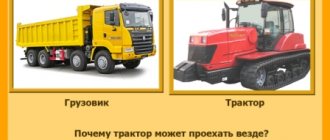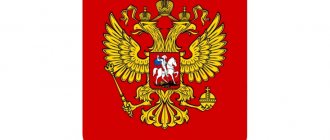Notes “Conversation about bread” lesson plan (3rd grade) on the topic
State budgetary educational institution school No. 131
Krasnoselsky district of St. Petersburg
ABSTRACT
Conversation “About Bread”
GPA teacher: Ozerkova T.P.
2016
Saint Petersburg
GOAL: to develop in children a value attitude towards bread as the basis of human life.
TASKS: 1.Tell children about bread as a symbol of human life.
2. Introduce children to the history of the appearance of bread.
3. Reveal the meaning and origin of the word bread.
4.Talk about the work of people who grow bread.
5.Introduce the process of bread production.
6. Expand children’s vocabulary using words: baker, yeast, fermentation, utensils, baking.
Technology: collaboration.
Bread is the main food of humanity. This is how it was thousands of years ago, this is how things are today, and this is how it must remain in the future.
Without bread there is no breakfast, no lunch, no dinner. Without bread, the most delicious food loses its charm and becomes boring. We cannot sit down at the table without bread.
Exercise 1.
Words are scattered on the board. These are parts of proverbs. You need to make up 5 proverbs. (Work in pairs).
And this is what we got:
1. “Bread is the head of everything.”
2. “Bread is the father, the breadwinner.”
3. “It’s a bad lunch if there’s no bread.”
4 “There is not a piece of bread, and there is melancholy in the mansion.”
5. “As long as there is bread and water, everything is not a problem...”
This is just a small fraction of Russian proverbs and sayings about bread. And there are hundreds of them in total.
And hundreds of other nations of the world have no less. Countless books have been written about bread, poems and songs have been written about it.
Bread has long been a symbol of life, work, and human activity in general. “He earned his own bread,” they say with respect about a working man.
Breaking bread is a symbol of friendship and trust; meeting with bread and salt is a sign of special respect and hospitality.
The history of bread began approximately 15,000 years ago.
In those distant times, our ancestors lived in dense forests and fertile valleys. They hunted wild animals, armed with stone tools, and collected roots, cereals and herbs. Then they tried for the first time raw grains of wild plants - predecessors of wheat, barley, oats, and corn. We tried it and realized that grains satisfy hunger.
Many centuries passed before anyone thought of grinding grains between stones and diluting the flour with water. This is how raw porridge, or bread soup, appeared, similar to what the peoples of Asia and Africa still eat.
Archaeologists still find charred grains during excavations. The porridge made from roasted grains turned out to be tastier than the raw one. This was another step towards bread.
Task 2. Name the types of porridges that are cooked from whole grains (buckwheat, millet, rice, oats, peas).
The word bread itself is of Greek origin. It comes from the word “klebanos” (a pot in which porridge was cooked from flour). The word has undergone some evolution and turned into “bread-carrier” and further, into “bread”.
A person learned to cook food so that there would be plenty of food; the collected grain was not enough. People realized that grain could be grown, not just harvested. The man plowed the land with a wooden plow and sowed the first modest fields with wheat, barley, and millet. He already knew that flour ground in hand mills could be used to bake flat cakes.
The cultivation of grain, the preparation of the first, simplest bread, is the third great step in its history.
It was necessary to become a reasonable person in order to throw grain onto the loosened ground, harvest the crop, separate the grains from the ears, winnow the husks, grind the grains into flour, and finally bake a flat cake in the hearth or fire.
Task 3. What equipment is used now when growing bread and harvesting grain?
People could now settle on the earth, change their nomadic life to a sedentary one, and find a homeland.
The ancient Egyptians learned to bake soft, fluffy bread. People sought to make bread tastier and tried different methods.
We live in a world saturated with microorganisms. Among them there are harmful ones that cause diseases, but there are also useful ones that are simply necessary for our lives.
Among these microorganisms there are many different yeasts. Many of them can cause fermentation and lead to food spoilage.
And one day in Egypt, someone decided to make baked goods from fermented dough. This unknown person was lucky: healthy yeast got into his dough. And the dough became light, fluffy, airy. And the bread baked from it is spongy and porous.
There is now a real science about bread. It is still developing now.
The ancient Greeks brought together three great skills of antiquity: growing productive and strong wheat, grinding it with millstones into flour and baking soft, porous bread.
From Egypt, the ability to cook bread came to Greece and Ancient Rome. A monument to the master baker Marcus Virgil was erected in Rome 2000 years ago.
Every nation has its own history of bread.
Task 4. Name the different types of bread or bread products.
It is known that 1000 years ago in Rus' they baked sour rye bread. It was a great art; sourdough recipes were kept in deep secret and passed on from generation to generation. Our rye bread to this day has no equal in the world.
Peasants baked bread in Russian ovens. The huts were small and dark. Near the stove are all the kitchen utensils (wooden shovel, kneading bowl, sieve).
Bread is a broad, collective concept. These are loaves, and loaves, and crackers, and bagels, and bagels. In total, over 500 different varieties and names of bread products are produced in our country. And among them are everyone’s favorite buns. They include additives such as butter, sour cream, eggs, sugar, milk. And all together - this is baking (from the word flavor).
There was a Filippova confectionery in St. Petersburg. A wide variety of products were sold there.
Modern bakeries have modern ovens. They differ from old stoves like a hundred-ton dump truck from a seal. These are long tunnels or chambers along which conveyor belts with baked bread move at a given temperature.
Some of these ovens bake up to 100 thousand loaves per day.
Early in the morning, bread is delivered to shops in special vehicles.
Our grandparents, residents of the besieged city of Leningrad, knew the special price of bread. The piece that fit in the palm of your hand was more valuable than gold, because... A person’s life depended on this piece. They baked siege bread with various additives, since there was not enough flour. The price of bread during the siege is life
Conclusion: 1. Treat bread with care.
2. Treat people who cultivate the land and grow bread with respect.







